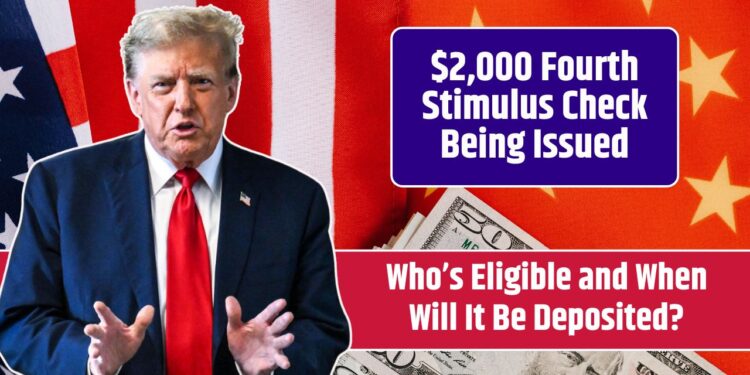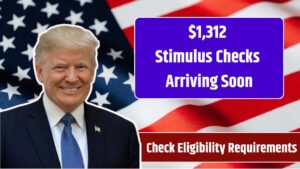With rising inflation and economic uncertainty, the idea of a fourth stimulus check has been gaining traction. While it hasn’t been officially approved, conversations in Washington suggest lawmakers are considering a one-time $2,000 payment to help Americans manage higher living costs. Here’s a closer look at what this potential stimulus could mean, who may qualify, and what you can do to stay ready.
What We Know About the Fourth Stimulus Check
Although not yet confirmed, the proposed fourth stimulus check is intended to offer direct financial relief to Americans who continue to feel the pinch of post-pandemic inflation. If passed, it would follow the same basic structure as previous stimulus programs.
| Topic | Details |
|---|---|
| Amount | $2,000 |
| Eligibility | U.S. citizens or residents with a valid Social Security number, income-based |
| Deposit Date | Not announced yet |
| Purpose | Provide relief amid inflation and support economic recovery |
| Official Source | IRS.gov |
Who Might Be Eligible
Eligibility will likely mirror that of the first three stimulus payments. While final details are still being discussed, here’s what we can reasonably expect:
- Citizenship or Residency: You must be a U.S. citizen or legal resident with a valid Social Security number.
- Income Requirements: The payment will be income-based, using your latest tax return to assess eligibility. Individuals earning under a certain threshold would receive the full amount, with phase-outs for higher incomes.
- Dependents: If you claimed dependents, you may receive additional funds for each qualifying child or adult dependent.
- Tax Filing Status: Those who haven’t filed taxes may want to do so soon, as eligibility will be determined largely through tax return data.
When Could the Check Arrive?
This is the question on everyone’s mind—and unfortunately, there’s no official timeline yet. While the IRS has historically acted quickly once legislation is passed, no bill has been finalized for the fourth check.
Government officials are still in debate, and until a measure is signed into law, any estimate is purely speculative. However, based on previous rollouts, once approved, payments could start arriving within weeks.
Why Another Stimulus Check?
There are several compelling reasons lawmakers are exploring this fourth round of payments:
1. Stimulate the Economy
Stimulus checks put money directly into people’s hands, which boosts consumer spending. That increase in demand can help businesses grow and create jobs.
2. Offset Inflation
With prices rising faster than wages in many sectors, a one-time payment can help households catch up—whether it’s paying for groceries, gas, or housing.
3. Ongoing Recovery
Many Americans are still dealing with the economic aftershocks of the pandemic—job losses, increased debt, and unstable income. A fourth check could provide a temporary financial cushion.
Looking Back: Previous Stimulus Rounds
The government has already distributed three rounds of stimulus checks since 2020. Each followed a similar pattern:
- Income-based eligibility
- Add-ons for dependents
- Distributed through direct deposit, paper checks, or prepaid cards
These payments helped cover essential costs like rent, utilities, and debt repayment during the peak of the crisis.
Inflation: The Driving Force Behind Relief Talks
The rising cost of living is a key motivator behind the renewed stimulus conversation. Everything from eggs to electricity has become more expensive, and relief efforts are seen as one way to help bridge the affordability gap.
A $2,000 check may not erase inflation, but it could ease the immediate pressure on households struggling to make ends meet.
Possible Alternatives to Direct Payments
Even if a fourth stimulus check doesn’t pass, there may be other forms of government aid coming down the pipeline, including:
- Expanded Child Tax Credits
- Unemployment Benefit Extensions
- Rent or Utility Relief Programs
- Supplemental Nutrition Assistance (SNAP) Expansion
These options offer a broader safety net, especially for low-income families or those facing job instability.
Tips to Stay Ready
Here are a few steps you can take now to make sure you’re in the best position to receive any future relief:
- File Your Taxes: Your 2023 return will likely determine eligibility.
- Update Direct Deposit Info: The IRS will use existing bank details on file.
- Watch Official Sources: Stay tuned to IRS.gov and reputable news outlets for accurate updates.
- Avoid Scams: Be cautious of emails or texts promising early access or asking for sensitive information.
If the proposed $2,000 fourth stimulus check does get the green light, it could bring meaningful relief to millions. Until then, the best move is to stay informed, keep your tax filings current, and prepare for a variety of financial assistance programs that may be on the horizon.
FAQs:
1. Will there be a fourth stimulus check?
It’s currently under discussion, but not yet confirmed by law.
2. Who could qualify for the payment?
U.S. citizens or legal residents with a valid Social Security number, likely based on income thresholds from recent tax filings.
3. What’s the proposed amount?
$2,000 per eligible adult, with possible additional funds for dependents.








